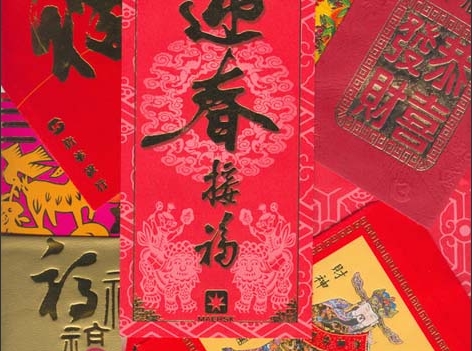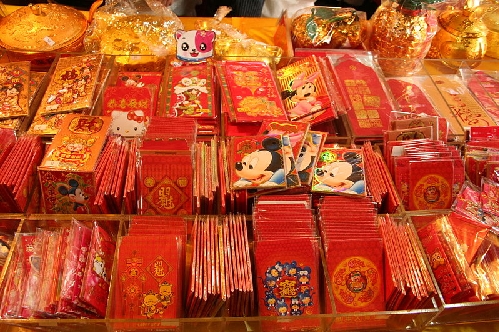
In Chinese and other Asian societies, a red envelope or red packet is a monetary gift which is given during holidays or special occasions.
Red envelopes are mainly presented at social and family gatherings such as weddings or on holidays such as the Lunar New Year. The red color of the envelope symbolizes good luck and is supposed to ward off evil spirits.
The amount of money contained in the envelope usually ends with an even digit, in accordance with Chinese beliefs; for instance 88 and 168 are both lucky numbers, as odd-numbered money gifts are traditionally associated with funerals. There is also a widespread tradition that money should not be given in fours, or the number four should not appear in the amount, such as in 40, 400 and 444, as the pronunciation of the word "four" resembles that of the word "death" and thus signifies bad luck for many Chinese. At weddings, the amount offered is usually intended to cover the cost of the attendees as well as signify goodwill to the newlyweds.
During the Lunar New Year, mainly in Southern China, red envelopes are typically given by the married to the unmarried, most of whom are children. (In the North, money is not given in envelopes.) The amount of money is usually a single note to avoid heavy coins and to make it difficult to judge the amount inside before opening. It is traditional to put brand new notes inside red envelopes and also to avoid opening the envelopes in front of the relatives out of courtesy.

Origin
There are no clear literary sources from which to trace the origin of the red envelope tradition. In China, during the Qin Dynasty, the elderly would thread coins with a red string. The money was called yāsuì qiánmeaning "money warding off evil spirits", and was believed to protect the elderly from sickness and death. The yasui qian was replaced by red envelopes when printing presses became more common. Red envelopes are also referred to as yasui qian.





